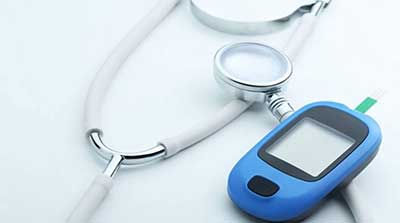Date: 01/05/2023
Relevance: GS-3: Issues relating to the development and management of Social Sector/Services relating to Health, Education, Human Resources
Key Phrases: Production-Linked Incentive, MedTech human resources, regulatory framework, Enhancing R&D capabilities, Make in India, Ministry of Skill Development and Entrepreneurship.
Context:
- The Indian medical devices sector is highly dependent on imports, with around 80-85% of the devices being imported, mainly high-end ones.
- The new National Medical Devices Policy aims to reduce this dependence to nearly 30% in the next few years and make India one of the top five global manufacturing hubs.
- The policy aims to promote export-driven manufacturing of affordable high-end offerings, increase India's per capita spending on medical devices, and make costly medical devices accessible and affordable.
Background:
- India's medical devices sector is regulated by the Drugs and Cosmetics Act of 1940, which has been inadequate in regulating medical devices.
- The lack of regulatory teeth was exposed after the revelation of faulty hip implants marketed by Johnson & Johnson.
- The industry has been asking for a specific policy on medical devices. In February 2020, changes were notified in the Medical Devices Rules, 2017, to regulate medical devices on the same lines as drugs.

Size of the Medical Devices Sector:
- India's current market share in the medical devices category is 1.5% of the global space or $11 billion (₹90,000 crore) in 2020.
- The policy aims to achieve a 10-12% global market share in the next 25 years, with the immediate short-term goal being a $50 billion industry by 2030.
- The US dominates the global market with a 40% market share, followed by Europe and Japan at 25% and 15% respectively.
The Role of PLI Schemes:
- The National Medical Devices Policy will be in addition to the existing Production-Linked Incentive (PLI) schemes that are already underway.
- The government has already approved 26 projects under the PLI scheme, with a committed investment of ₹1,206 crore.
- Domestic manufacturing of high-end medical devices like Linear Accelerator, MRI Scan, CT-Scan, Mammogram, C-Arm, MRI Coils, high-end X-ray tubes, etc., has already begun.
- The remaining 12 products will be commissioned in the near future.
About PLI Scheme:
- The Production-Linked Incentive (PLI) scheme is a government-led initiative that aims to boost the manufacturing sector in India by offering financial incentives to companies that produce goods locally.
- Under the PLI scheme, companies in certain sectors such as electronics, pharmaceuticals, and textiles are eligible to receive financial incentives based on their incremental sales over a particular period.
- The incentives are usually offered in the form of a percentage of the additional sales, and are paid out over a period of several years.
- The main objective of the PLI scheme is to increase domestic production and reduce reliance on imports, thus promoting the "Make in India" initiative.
- By providing incentives to companies that manufacture locally, the government hopes to attract more investment in the manufacturing sector and create employment opportunities for the local workforce.
The Policy's Framework:
- The National Medical Devices Policy will promote research and development, establish Centers of Excellence in academic and research institutions, promote innovation hubs, and support start-ups.
- It will encourage private investments, venture capital funding, and public-private partnerships in the segment.
- The policy will also focus on skilling, reskilling, and upskilling professionals in the medical device sector through the Ministry of Skill Development and Entrepreneurship.
- It will support dedicated multidisciplinary courses in existing institutions to ensure the availability of skilled manpower and produce future-ready MedTech human resources.
- The policy will make partnerships with foreign academic institutes and industry organizations to develop med-tech.
- It will also create a dedicated export promotion council for the sector to improve brand positioning and awareness, promote studies and projects to learn the best global practices of manufacturing and adopt globally successful models in India.
- Additionally, the policy will encourage more forums to bring together various stakeholders.
- Simplifying the regulatory framework: The policy aims to streamline the regulatory approval process for medical devices by introducing a single-window clearance system for the import, manufacture, and sale of medical devices.
- Promoting domestic manufacturing: The policy aims to encourage domestic manufacturing of medical devices by providing incentives such as tax exemptions, subsidies, and funding support. This will help reduce the dependence on imports and create more job opportunities in the sector.
- Improving Infrastructure: The policy aims to enhance the existing infrastructure for the manufacturing and testing of medical devices, including the establishment of testing labs and centres of excellence.
- Enhancing R&D capabilities: The policy aims to promote R&D in the medical device sector by providing funding support and creating collaborative platforms for academia, industry, and government to work together.
Conclusion:
- The National Medical Devices Policy is a significant step towards reducing India's import dependence on high-end medical devices and promoting affordable, high-end offerings.
- The policy will also increase India's per capita spending on medical devices and make costly medical devices accessible and affordable.
- The policy framework will encourage research and development, private investment, and public-private partnerships, along with skilling, reskilling, and upskilling professionals in the sector.
Source: The Hindu BL
Mains Question:
Q. What are the challenges faced by India's medical device sector? How does the National Medical Devices Policy aim to address these challenges? (250 Words).







